Andr Pirro: Bibliothque nationale de France
ABOUT THE AUTHOR
Andr Pirro (18691943) was a pioneer of modern French musicology who published numerous books and articles on music. Born in Saint-Dizier, France, he studied law and letters at the Sorbonne and attended the organ classes of Csar Franck and Charles-Marie Widor at the Paris Conservatory. He later became a member of the directorial committee of the Schola Cantorum where he also taught organ and music history, and in 1912 he succeeded Romain Rolland as professor of music history at the Sorbonne.
ABOUT THE TRANSLATOR
Joe Armstrong (b. 1944) is a flutist who has also specialized in teaching the Alexander Technique to professional musicians in the Boston area since 1972. He served as a flutist in the U. S. Army Field Band and attended Illinois Wesleyan University, the University of Illinois, Tufts University, and the Constructive Teaching Centre in London, England. He has co-written and published two books and numerous articles related to the Alexander Technique and musical performance.
Published by Rowman& Littlefield
4501 Forbes Boulevard, Suite 200, Lanham, Maryland 20706
www.rowman.com
10 Thornbury Road, Plymouth PL6 7PP, United Kingdom
Copyright 2014 by Joe Armstrong
All rights reserved. No part of this book may be reproduced in any form or by any electronic or mechanical means, including information storage and retrieval systems, without written permission from the publisher, except by a reviewer who may quote passages in a review.
British Library Cataloguing in Publication Information Available
Library of Congress Cataloging-in-Publication Data
Pirro, Andr, 18691943, author.
[Esththique de Jean-Sbastien Bach. English]
The aesthetic of Johann Sebastian Bach / Andr Pirro ; translated by Joe Armstrong.
pages cm
Translation of: Esththique de Jean-Sbastien Bach. Paris :Fischbacher, 1907.
Includes bibliographical references and index.
Summary: Pirros work is based primarily on an examination of the close relationships between language and music in Bachs vocal works and provides us with an extensive and well-researched lexicon of the expressive resources of Bach and his contemporaries. Pirros study thus serves as a still sound basis for understanding and interpreting Bach's instrumental worksProvided by publisher.
ISBN 978-1-4422-3290-7 (cloth :alk. paper) ISBN 978-1-4422-3291-4 (ebook) 1. Bach, Johann Sebastian, 16851750. 2. MusicPhilosophy and aesthetics. I. Armstrong, Joe, 1944 translator. II. Title.
ML410.B13P513 2014
780.92dc23 2014003975
 The paper used in this publication meets the minimum requirements of American National Standard for Information SciencesPermanence of Paper for Printed Library Materials, ANSI/NISO Z39.48-1992. Printed in the United States of America
The paper used in this publication meets the minimum requirements of American National Standard for Information SciencesPermanence of Paper for Printed Library Materials, ANSI/NISO Z39.48-1992. Printed in the United States of America
FOREWORD
As the study of text-music relations in Bachs music has become increasingly sophisticated, it is easy to dismiss early ventures in the field as facile. Among these are Albert Schweitzers J. S. Bach le musician pote (1905) and Andr Pirros LEsthtique de Jean-Sbastien Bach (1907). Of the two, Schweitzers is the better known, no doubt because it appeared almost immediately in both German and English translations (1908 and 1911, respectively) and has been steadily reprinted since then.
It is unfortunate that Pirro is so little known in the English-speaking world. In 1957, when Mervyn Savill translated Andr Pirros 1906 biography of J. S. Bach, he wrote:
Andr Pirro (18691943) is considered one of the most important figures in the field of musicology of our time. Born in Saint-Dizier, France, he studied law and letters and attended the organ classes of Csar Franck at the Paris Conservatory. Later a member of the directing committee of the Schola Cantorum, in 1912 he succeeded Romain Rolland as Professor of Musical History at the Sorbonne. Of Pirro, A Dictionary of Modern Music and Musicians says: The historic and artistic value of his works and the spirit animating them reveal him as one of the most striking personalities among musicologists.
Pirros 1906 biography of Bach grew out of his early interest in the organ. The very next year he completed LEsthtique de Jean-Sbastien Bach as a dissertation for the University of Paris. Three subsequent books confirmed Pirro as a leader in modern French musicology: Dietrich Buxtehude (Paris, 1913/R), Schtz (Paris, 1913/R), and Les clavecinistes: tude critique (Paris, 1924/R). Other publications demonstrate an interest in early music. The last and most significant of these is Histoire de la musique de la fin du XIVe sicle la fin du XVIe (Paris, 1940).
For a time Pirros LEsthtique de Jean-Sbastien Bach was out of print; then it became available again in the Minkoff Reprint series (1973). Pirros work has usually been praised by those who are familiar with it. As early as 1909 Ebenezer Prout wrote:
It is scarcely saying too much to say that M. Pirro seems to be acquainted with nearly every bar of Bachs music. In proof of this it may be said that of Bachs 190 [sic] church cantatas, no fewer than 182 are either quoted in the work or referred to in a way which proves that the author is perfectly familiar with them.
This English translation will allow Pirros contribution to the understanding of text-music relations in the music of Bach to receive the wider attention that it has long deserved. While some of Pirros assertions must be reconsidered in the light of more recent scholarship, many are still worthy of careful consideration. English readers will appreciate the fluency of this translation and the attention paid to detailthe addition of measure numbers to Pirros original music examples is particularly welcome.
MELVIN UNGER, DIRECTOR
RIEMENSCHNEIDER BACH INSTITUTE
Footnotes
See review by Paul Brainard, Early Music 14/4 (1986): 587.
See, for example. Walter Emerys comments in Bachs Symbolic Language, Music and Letters 30/4 (1949): 34554.
Andr Pirros LEsthtique de Jean-Sbastien Bach, Monthly Musical Record 39 (1909): 53, as quoted in Samuel Baron, Bachs Text Settings: Schweitzer and Pirro Revisited. A Bach Tribute: Essays in Honor of William H. Scheide, eds. Paul Brainard and Ray Robinson (Kassel/Chapel Hill: Brenreiter/Hinshaw, 1993), 21.
TRANSLATORS PREFACE
My interest in translating this 1907 bookLEsthtique de Jean-Sbastien Bach, by the French scholar and organist Andr Pirro (18691943)stems from an essay given to me in 1993 by fellow flutist Sue-Ellen Hershman-Tcherepnin: Bachs Text Settings: Schweitzer and Pirro Revisited. It was written by her friend and former teacher, the late flutist and director of the Bach Aria Group, Samuel Baron, whose conviction that Pirro was a passionate pursuer of the true and essential nature of Bachs expression was borne out when I read LEsthtique for myself. As a longtime player and ardent admirer of Bachs music, I ultimately found this uniquely powerful and beautiful work to have something quite important to offernot only to performers and scholars but also to listeners who seek a deeper understanding of Bach. I also found that Pirros very detailed research substantiates Pablo Casalss inspiring words: Bach being the universal genius, there is no emotion that has not been expressed by him, except stinginess, meanness and all that is incompatible with a noble mind.


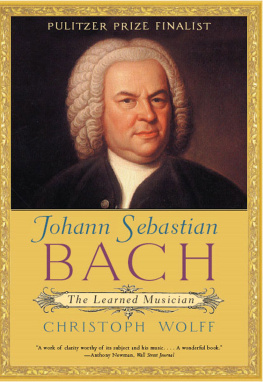
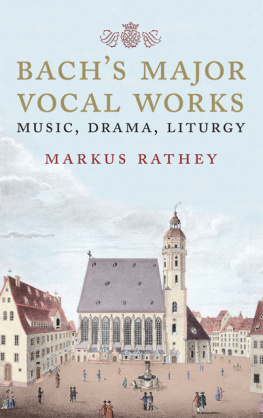
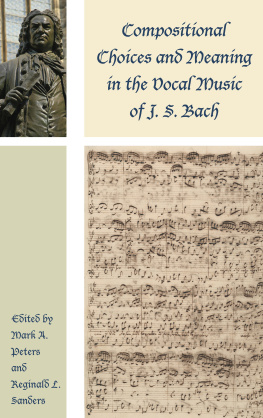

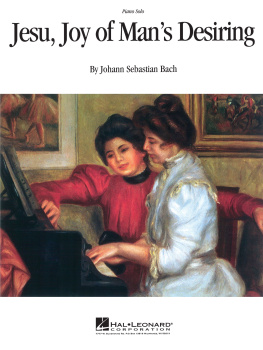

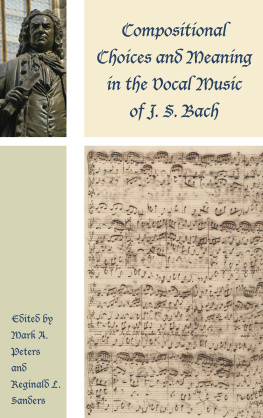
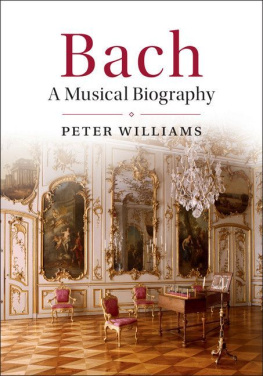
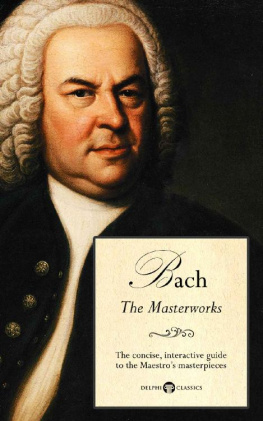
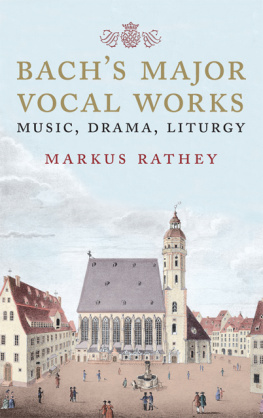



 The paper used in this publication meets the minimum requirements of American National Standard for Information SciencesPermanence of Paper for Printed Library Materials, ANSI/NISO Z39.48-1992. Printed in the United States of America
The paper used in this publication meets the minimum requirements of American National Standard for Information SciencesPermanence of Paper for Printed Library Materials, ANSI/NISO Z39.48-1992. Printed in the United States of America